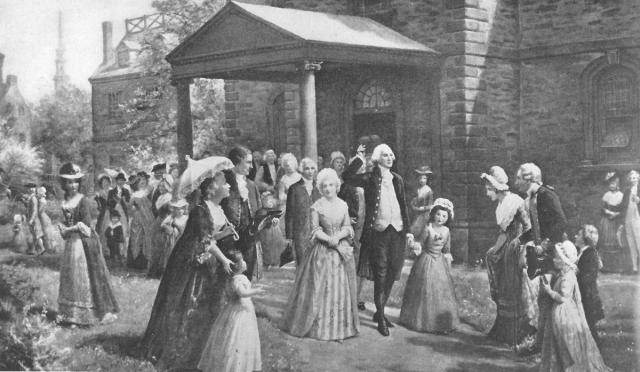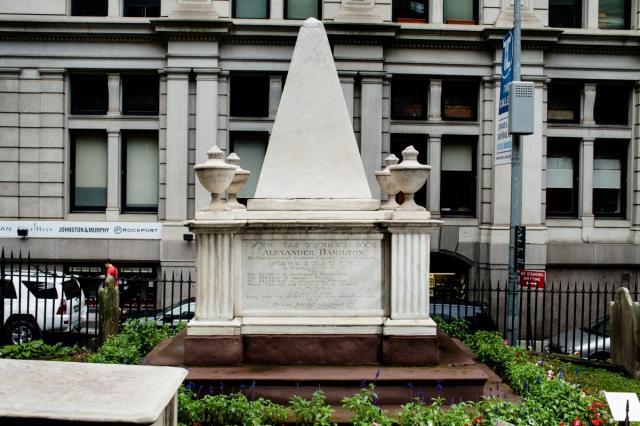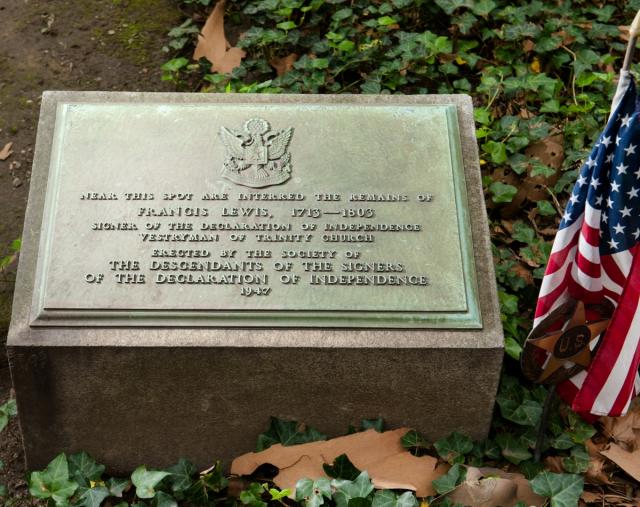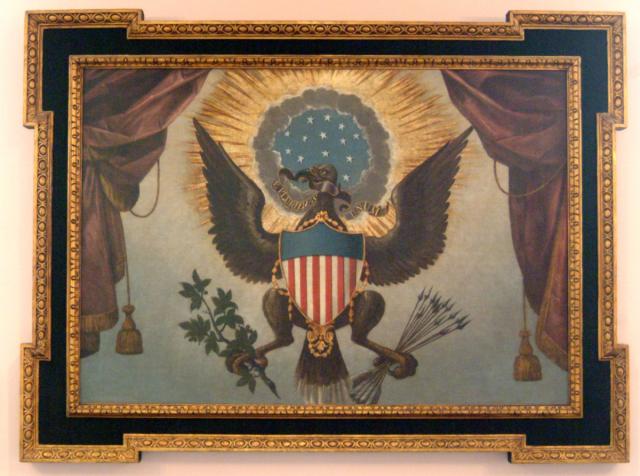The Founding Fathers at Trinity
On July 4, we celebrate Independence Day—a national holiday which commemorates the work of our country’s founding fathers and the adopting of the Declaration of Independence (the signing of that document occurred two days earlier on July 2, 1776).
When we use the term “founding father,” what do we mean? For some, it is a general term referring to those prominent politicians, soldiers, and citizens who helped in the fight for American Independence. Others use it more narrowly, referring only to those signers of the Declaration of Independence and framers of the U.S. Constitution.
Whatever definition you use, the men below are considered some of our country’s most influential founding fathers, and have strong connections to the Parish of Trinity Church.
George Washington—not only the Commander-in-Chief of the Continental Army, but also a framer of the United States Constitution—attended services at Trinity Church and St. Paul's Chapel while the Continental Army was in New York during the Revolutionary War. One such service includes perhaps his most famous visit to the parish when he, along with both houses of Congress, made their way to St. Paul's Chapel following his inauguration, as first United States President, at Federal Hall.
Alexander Hamilton served as Washington’s chief staff aide, but he also served as one of the leading interpreters of the U.S. Constitution—which he promoted by authoring much of The Federalist Papers—and later signed. Known as a leader in establishing our country’s national banking system, Hamilton also helped Trinity with their finances by providing legal counsel to the Parish in several legal cases. Alexander Hamilton also owned a pew at Trinity, had several of his children baptized in the church, and is buried in the Churchyard.
Also buried in Trinity’s Churchyard is Francis Lewis. Lewis was a representative of New York at the Continental Congress in 1775, a signer of the Articles of Confederation, and is the only signer of the Declaration of Independence buried on the island of Manhattan.
Few founding fathers were as accomplished as Trinity pew-owner John Jay, who played a number of significant roles in the formation of the United States. Jay, like Alexander Hamilton, was another author of The Federalist Papers. He also signed the Treaty of Paris, served as the second governor of New York, and as first Chief Justice of the United States. In addition to being a leader in government, John Jay also served as a leader in his church, serving as a churchwarden at Trinity Church from 1785-1790.
The list goes further still with such founding fathers as James Monroe, delegate in the Continental Congress and fifth President of the United States, who had both his wedding (1786) and his funeral (1831) at Trinity Church; John Adams, first Vice President and second President of the United States and a leading political thinker who helped Thomas Jefferson draft the Declaration of Independence, rented the Richmond Hill Estate on Trinity land during his tenure as Vice President in New York; and James Duane, a signer of the Articles of Confederation and New York’s first post-colonial Mayor, served as a Trinity Vestryman from 1772-1777 and a Warden from 1784-1794.
While Independence Day is an important day to reflect and acknowledge the ambitious work of these founding fathers, it’s also an important day to have fun. After all, just as we celebrate in modern times with cookouts and fireworks, John Adams wrote in 1776: “It ought to be solemnized with Pomp and Parade, with Shews, Games, Sports, Guns, Bells, Bonfires and Illuminations from one End of this Continent to the other from this Time forward forever more.” In this spirit, we leave you with one of the more fun connections between founding father and Trinity Church.
Benjamin Franklin, we know, was responsible for commissioning and overseeing construction of the Montgomery Monument which honors Revolutionary hero General Richard Montgomery and now resides at St. Paul’s Chapel. What we don’t know for certain, is whether Franklin also played a role in another piece of art at St. Paul’s – though it is fun to speculate. Inside St. Paul’s Chapel, hanging above where George Washington’s Pew once was, hangs one of the earliest depictions of the Great Seal of the United States. In this work by an unknown artist, the bird looks a bit more like a turkey than it does an eagle. There are rumors that Franklin favored the turkey as the national bird of the United States, over the bald eagle, due to its North American nativity and it being a much more respectable bird, by comparison.









